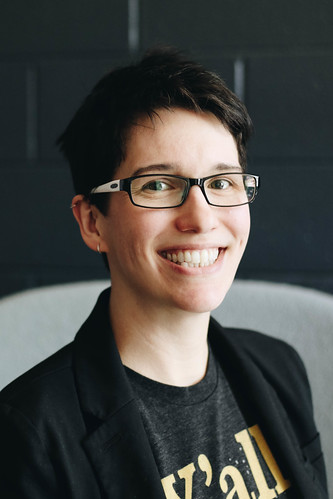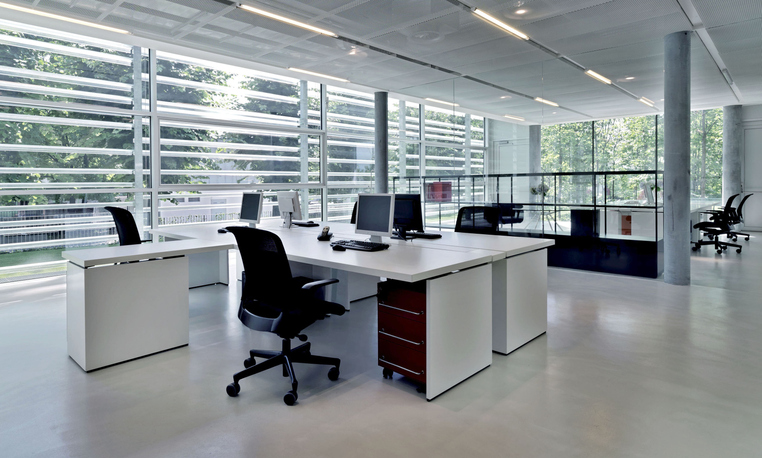COVID-19 will change the future of interior design
Article body
According to the Environmental Protection Agency, we spend more than 90 percent of our time indoors—where we work, where we shop, where we worship, where we go to school—and we aren’t the only ones living there. Pathogens—germs—are there too. The COVID-19 pandemic has forced everyone to stay inside even more and raised questions about our ability to keep ourselves safe among potential pathogens, like the novel coronavirus.
Anna Ruth Gatlin and Lindsay Tan teach interior design in Auburn’s College of Human Sciences. Gatlin, an assistant professor, has expertise in workplace design, having worked with a number of industry partners. Tan, the W. Allen and Martha Reimer Reed Associate Professor, leads the college’s Design Ecology Lab and the new Pathogen Lab, which will equip students with the tools needed to design healthy homes, kitchens, schools, hospitals and more. Together, the pair offer their thoughts on the impact COVID-19 will have on future design.
What is COVID-19 teaching us about interior spaces?
Tan: COVID-19 is teaching us that interior design matters. Work spaces, retail spaces, classrooms, hotels and hospitals—important conversations are going on right now across nearly every industry about how interiors can be redesigned to better protect our health, safety and welfare.
Gatlin: Simple things that we took for granted before—sitting next to someone at a meeting, sharing a pen or touching the refrigerator door in the breakroom kitchen—are suddenly front and center in the conversation about how to make interiors safer for everyone in a post-COVID world.
Tan: We know that social distancing plays an important role in protecting health because the virus can be transmitted directly from person to person. But the virus can also be transmitted through everyday objects, especially high touch surfaces like light switches and door handles. That is why the design of these everyday objects and the routines used to clean them matter so much, and why COVID-19 is changing everything about how we design interiors, especially work places, and at least in the near future.
How will post-COVID work spaces change?
Gatlin: That’s the question everyone is trying to answer right now, but one thing is certain: As more and more businesses slowly begin reopening and returning to normal operations, it will be critical to make sure workers are safe—and that they feel safe—returning to the workplace. Space planning is a central part of an interior designer’s job, and it is one of the most important parts of the conversation about how to return to work safely.
Tan: Most office environments, for example, use open plans with few dividers and close proximity between workers to promote collaboration and make the most use out of the available square footage. In fact, some offices even use “hoteling,” which means there are no assigned work stations; employees sit at any open workstation on the days they’re in the office. This arrangement is especially appealing for companies where employees frequently travel or have asynchronous work hours.
Gatlin: Space planning with social distancing in the office will require some thought and reconfiguration. In a post-COVID workspace, at least in the near future, workstations will be farther apart for social distancing. Although people may be back to working on site, they may feel safer collaborating with coworkers via video, phone and email rather than face to face. Enclosed areas previously designated as collaboration spaces might be put to better use as private offices until the pandemic threat has passed. Distributing office equipment and amenities like break rooms across the office so that a smaller number of people access each setup can also reduce the risk of transfer.
Tan: Cleaning protocols—especially for common touch surfaces—will need to be enhanced, but they will also need to be made more visible. It is easier for workers to feel safe when they can see protocols in action. And it’s important for us all to see and acknowledge the hard work, and dangerous work, being done by facilities and maintenance staff every day to keep us all safe. These workers, who typically work long hours over night and early into the morning, are the invisible front line of the COVID-19 response.
How important is maintenance in terms of workplace safety?
Gatlin: Maintenance is a critical partner in the effort to keep interior spaces safe as more businesses begin to reopen. It won’t matter that the best antimicrobial and scrubbable finishes are specified and everyone has their own private office if the physical environment is not well-maintained with regular and effective cleaning. Specifying materials and furniture that can be easily maintained is a large part of the designer’s job; insuring that it’s regularly maintained is the owner’s job.
Tan: But it’s not just the designer’s job, or the owner’s job; it’s every person’s personal responsibility to do our part. We should all be wearing masks, maintaining social distancing and washing our hands, of course, but we can also think of ways to help maintenance. Consider limiting the number of items on your desk, and clearing the desk at the end of your work day. Clean your work area, including your chair arms and any high touch surfaces, before and after your work day.
Gatlin: We know that it sounds like a lot, but even though each one of us is responsible for doing our part we are not doing it alone. This is a team effort that includes the designers, owners, employees and maintenance staff, all working toward a common goal: Creating a safe workplace environment that is as welcoming as possible.
This is a novel coronavirus—something brand new—so how can we know how to design for it?
Tan: Although this coronavirus is new, the industry has a lot of experience dealing with threats from other coronaviruses, as well as other pathogens. We aren’t starting from scratch, and the solutions we need to implement aren’t even that novel. Health care design—hospitals, doctor’s offices, clinics, diagnostic labs—is at the forefront of the problem and we can look to that sector for many of the solutions we need now.
Gatlin: The materials selected for workstations, flooring, walls, restrooms and break areas will be critical in increasing safety within the workplace. There are many finishes on the market that are antimicrobial—able to weaken or kill pathogens—and specifying these finishes for high touch surfaces and areas where social distancing is not possible, such as in an elevator, may be useful. Other materials are better at reducing viral load simply because they are easier to clean or sanitize, such as vinyl products.
Tan: Dr. Gatlin and I have been involved in some important conversations with industry partners over the last month or so. One thing is clear: We have all the tools we need to battle this pandemic threat head on, but it comes down to each of us stepping up to do what we can. And it comes down to patience; it will take time to implement solutions and to see results.
Gatlin: That’s one of the reasons that staying home and closing businesses and public spaces wherever possible has been important—to give businesses time to envision and implement solutions for post-COVID workplaces, schools, restaurants, retail spaces and all the places we miss. As these places begin to reopen, you will see some immediate changes to the designed environment. These are just the first few steps that could be implemented most rapidly. More changes will be needed in the months to come to protect the health, safety and welfare of workers across every sector and the public at large.
Tan: Sometimes it seems that we’re all in a rush to get back to “business as usual,” but we shouldn’t be looking back; we should be looking forward. We should be looking toward hope and designing for what the world needs next.
Auburn University is a nationally ranked land grant institution recognized for its commitment to world-class scholarship, interdisciplinary research with an elite, top-tier Carnegie R1 classification, life-changing outreach with Carnegie’s Community Engagement designation and an undergraduate education experience second to none. Auburn is home to more than 30,000 students, and its faculty and research partners collaborate to develop and deliver meaningful scholarship, science and technology-based advancements that meet pressing regional, national and global needs. Auburn’s commitment to active student engagement, professional success and public/private partnership drives a growing reputation for outreach and extension that delivers broad economic, health and societal impact.







